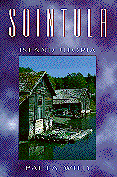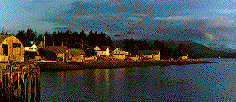

![]()

|
Sointula -- Island Utopia.
Paula Wild. Subject Heading:
Grades 10 and up / Ages 15 and up.
***/4
|
excerpt:
After three days and nights of celebrating, exploring and bonfires on the beach, the settlers gathered to name the site of their utopia. "Sointula" (Harmony) was chosen over Makela's previous suggestion of "Kodiksi." Beckman proposed a colony flag featuring a white outline of Malcolm Island on a blue background. On the island would appear a golden "kantele," a small harp that holds a prominent place in the "Kalevala" and is a symbol of Finnish culture. Coquitlam spontaneously decided to remain. Since the two cabins were already full, tents were ordered to house the overflow. As the island had no post office, Makela agreed to return to Nanaimo where he would run the "Aika" (a newspaper) and process membership applications. The future seemed bright for the colonists; there was wood to build with, berries to eat and song birds everywhere. Halminen wrote later, "Everyone worked so hard, with this group it truly seemed possible that we could build a utopia."
Inspired by the idea of Sointula, all who had come north on the
This book is a history of the Finnish community of Sointula on Malcolm Island, which is situated in Queen Charlotte Strait between the mainland of British Columbia and Vancouver Island. Matti Kurikka, a Finnish Socialist and charismatic leader was appointed president of the Kalevan Kansa Colonisation Company Limited. Authorities in British Columbia, on behalf of the Crown, granted land on Malcolm Island to the Finnish company in November 1901.

Recommended.
Joan Payzant is a retired teacher/librarian living in Dartmouth, N.S.
To comment on this title or this review, send mail to cmeditor@mts.net.
![]()
Copyright © 1996 the Manitoba Library Association.
Reproduction for personal use is permitted only if this copyright notice
is maintained. Any other reproduction is prohibited without permission.
Published by
The Manitoba Library Association
ISSN 1201-9364
![]()